Welcome to...

~ Exploring Sunspots ~
Hello, All...
Many of us own solar filters, or employ safe solar projection techniques, and enjoy keeping tabs on current sunspot activity. And what better way understand what we are looking at than to learn a bit more about them!
Identifying An Area
Sunspot Classifications
Magnetic Classifications
X-Ray Flares and Data
SOHO cameras
Solar Activity
Some great stuff, huh?! First let's start by discussing exactly what a sunspot is:
Sunspots are places on the Sol's photosphere where the temperatures are 3,600 degrees farenheit cooler that the surrounding sunscape. This is why they look dark! They appear where the Sun's magnetic field is trying to emerge through the photosphere, and effectively act as a "scab" upon the surface to keep the rising energy from reaching the surface.
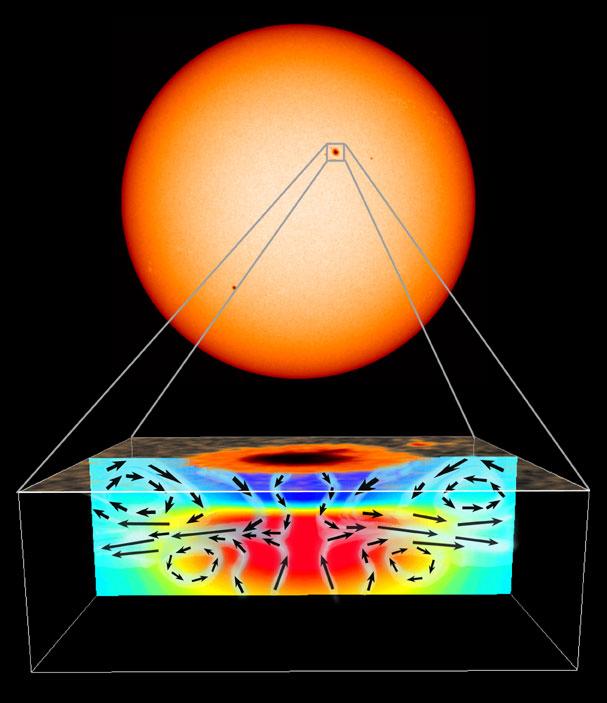
~courtesy of SOHO/MDI
The sunspot's dark central region is know as the umbra and they are often surrounded by a much cooler, lighter halo known as the penumbra. The spots themselves are super-magnetized, containing a strong negative, or postive charge... and sometimes both!
This next series of "lessons" is dedicated to learning about sunspots and to follow along on the life cycle of one that most of us have recently observed... Giant 39!
I am by no means a solar physicist, just a long time observer. So, if you don't mind? I'd like to share with you a bit of what I know...
And rock on!
~ IDENTIFYING AN AREA ~
One of the first things a solar observer needs to do is to identify the area that you are looking at. Each sunspot group is given a Boulder Sunpot Number.
For example:

~SOHO/MDI annotated
These numbers give us a common point of reference in both reporting and accessing data.
Using a formula devised by Rudolf Wolf in 1848, scientists track solar cycles by counting sunspots as they appear on our visible surface. But it's not quite as easy as it sounds! Using a pair of solar safe binoculars might reveals as many as four or five at a given time, while our average telescopes might reveal as many as 50!
There are two official sunspot numbers in common use. The first, the daily "Boulder Sunspot Number," is computed by the NOAA Space Environment Center, and is easily accessed by going to:
The second official index, the "International Sunspot Number," published daily by the Sunspot Index Data Center in Belgium:
Now that we know how to identify a sunspot number with an observed area, let's dig deeper into our information!
~ SUNSPOT CLASSIFICATIONS ~
Next thing to learn is how a sunspot group is classified. (Because when it comes to reading data... you might like to know what those letters stand for!)
There are two types of classfications - MacIntosh and Zurich. (of course there is modified zurich in there too, but i don't have any idea of what that means... so don't ask!) Both are basically the same. So let's have a look!
McIntosh Sunspot Group Classification:
Sunspot groups are classified by a three letter code. The first code letter deals with the group type. The second code letter describes the penumbra of the largest spot of the group. The third code letter describes the compactness of the spots in the immediate part of a group.
Group Type:
A: Unipolar group without penumbra.
B: Bipolar group without penumbra on any spots.
C: Bipolar group with penumbra on one end of group, usually surrounding largest of leading umbra.
D: Bipolar group with penumbrae on spots at both ends of group and with longitudinal extent less than 10°.
E: Bipolar group with penumbrae on spots at both ends of group and with longitudinal length between 10° and 15°.
F: Bipolar group with penumbrae on spots at both ends of group and with longitudinal length more than 15°.
H: Unipolar group with penumbra.
Penumbra of Largest Spot:
x: No penumbra (class A or B)
r: Rudimentary penumbra partly surrounds largest spot.
s: Small, symmetric penumbra, elliptical or circular and N-S size smaller than 2.5".
a: Small, asymmetric penumbra, irregular in outline and N-S size smaller than 2.5°.
h: Large, symmetric penumbra, N-S size larger than 2.5°.
k: Large, asymmetric penumbra, N-S size larger than 2.5.
Spot Compactness:
x: Assigned to (but undefined for) unipolar groups (types A and H).
o: Open - few, if any, spots between leader and follower.
i: Intermediate - numerous spots between leader and follower, all without mature penumbra.
c: Compact - many large spots between leader and follower, with at least one mature penumbra.
So, for example, if you were looking up data on a particular sunspot, and found the classification "Fki", you would know that this particular spot was:
F - bipolar (containing both a positive and negative charge) with penumbra on boths ends exceeding a longitudinal length of 15 degrees.
k - the leader has a large, asymmetic penumbra with a N/S size larger the 2.5.
i - and that the group is intermediate with many spots between the leader and followers without mature penumbra.
See how easy that is! ;)
Now! Let's explore...
~MT. WILSON MAGNETIC CLASSIFICATIONS ~
alpha - A unipolar sunspot group.
beta - A sunspot group having both positive and negative magnetic polarities (bipolar), with a simple and distinct division between the polarities.
gamma - A complex active region in which the positive and negative polarities are so irregularly distributed as to prevent classification as a bipolar group.
beta-gamma - A sunspot group that is bipolar but which is sufficiently complex that no single, continuous line can be drawn between spots of opposite polarities.
delta - A qualifier to magnetic class indicating that umbrae separated by less than 2 degrees within one penumbra have opposite polarity.
beta-delta - A sunspot group of general beta magnetic classification but containing one (or more) delta spots.
beta-gamma-delta - A sunspot group of beta-gamma magnetic classification but containing one (or more) delta spots.
gamma-delta - A sunspot group of gamma magnetic classification but containing one (or more) delta spots.
So, now if you read that a sunspot area has a twisted beta/gamma/delta magnetic region...
You understand!
Now, let's take what we know of magnetic classifications and have a look at what's going on inside the sunspot magnetically.
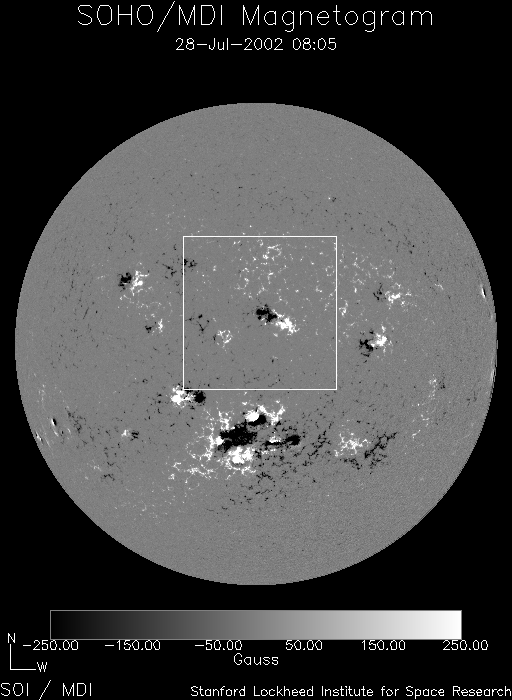
~courtesy of the NASA/SOHO program
Once again, we are using our most current area of Spot 39 and environs... And they take center stage in this SOHO magnetogram!
Using this type of readily available information, we can literally "see inside" the interior workings of a sunspot group and judge what happens by the appearance of both positive and negative fields. The strength of the magnetism is measured in "gauss"... and the typical sunspot carries about 2,500 gauss in either positive or negative energy.
Not impressed, huh? Then think on this... The total combined magnetic energy for Planet Earth is less than one gauss!
Trying not to stray too far away from the subject, but the normal 11-year sunspot cycle has a 22-year magnetic cycle superimposed over it. During the first 11 years, all the leading fields on one side of the hemisphere will have positive energy first, while on the other side, negative begins the race across the surface. During the next 11 years, they switch! This is known as "Hale" value.
Isn't this fun?!
Now that we know a bit more about what's going on, let's have a go at reading a sample of NOAA sunspot information:
Product: 0729SRS.txt : Issued: 2002 Jul 29 0040 UTC # Prepared jointly by the U.S. Dept. of Commerce, NOAA,
# Space Environment Center and the U.S. Air Force. #
Joint USAF/NOAA Solar Region Summary SRS Number 210 Issued at 0030Z on 29 Jul 2002 Report compiled from data received at SWO on 28 Jul I. Regions with Sunspots. Locations Valid at 28/2400Z
Nmbr Location Lo Area Z LL NN Mag Type
0037 N13W87 287 0090 Hsx 02 01 Alpha
0038 N18W44 244 0020 Cso 05 03 Beta
0039 S15W04 204 0920 Fki 17 48 Beta-Gamma-Delta
0042 S19W43 243 0010 Hrx 01 01 Alpha
0043 N12W13 213 0160 Dai 10 20 Beta
0044 S21W11 211 0530 Fki 18 43 Beta-Gamma-Delta
0045 N05W39 239 0110 Dao 06 12 Beta
0048 N21E25 175 0100 Dso 08 10 Beta
0050 S07E09 191 0290 Dao 08 23 Beta
0051 S16E54 146 0100 Hsx 02 01 Alpha
0052 N09E17 183 0030 Cro 05 05 Beta
0053 S17E24 176 0010 Hrx 00 01 Alpha
0054 S21E70 130 0040 Cro 05 02 Beta
IA. H-alpha Plages without Spots. Locations Valid at 28/2400Z Jul
Nmbr Location Lo
0040 S19W82 283
0041 N16W58 259
0046 N15W30 231
0047 N09W87 287
0049 S05W57 257
II. Regions Due to Return 29 Jul to 31 Jul
Nmbr Lat Lo
0025 S20 081
0028 S17 070
For future use, you can freely access this information for yourself by going to:
Of course, latitudes and longitudes are something that most of us in astronomy already understand, so let's just concentrate on the data for spot 39.
Using what we have learned so far, we have a classfication of "Fki" which is a region notorious for producing all manner of flare activity, and a beta/gamma/delta class magnetic field, which can lead to even more startling reactions!
When these types of fields meet, they twist round one another producing magnetic "sheer", and lead to explosions know as flares. Flares explde in a burst of radiation across the electro-magnetic spectrum and are comprised of radio waves, x-rays and gamma rays. Let's check into how they are classified, and what it means to us...
~ CLASSIFICATION OF X-RAY SOLAR FLARES ~
X-Class - These flares are big ol' boys! They are major events that can trigger planet-wide radio blackouts and long-lasting radiation storms.
M-Class - These flares are medium-sized and they generally cause brief radio blackouts that affect Earth's polar regions. Minor radiation storms sometimes follow an M-class flare.
C-class - These flares are small with little impact for Planet Earth.
So, would you like to see this kind of information in action? The follow this link to GOES X-ray flux monitor and have a look for yourself! (notice the flare classfications along the right hand side of the graph...)
And then come back! Cuz' we've got lots more to learn... ;)
~ SOHO CAMERAS ~
MDI/continuum -
By far, my favourite is the MDI contiuum camera shots. Our Sun is constantly giving off wave oscillations on the surface. These waves can be caught by Michaelson Doppler Imaging (MDI) and displayed as doppler shifts across the solar surface.
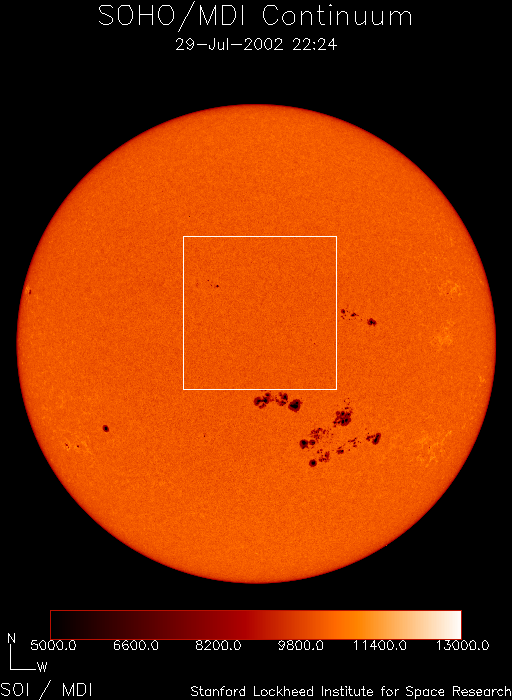
Once again, we are looking at our most current areas, spots 39 and 44. Many others exist in those photo, but it's YOUR turn to label them! ;)
Extreme Ultraviolet Imagining (EIT)-
Another fascinating glimpse inside of our nearest star happens with the EIT camera. Several different color spectra are available to view! Let's check one of them out...
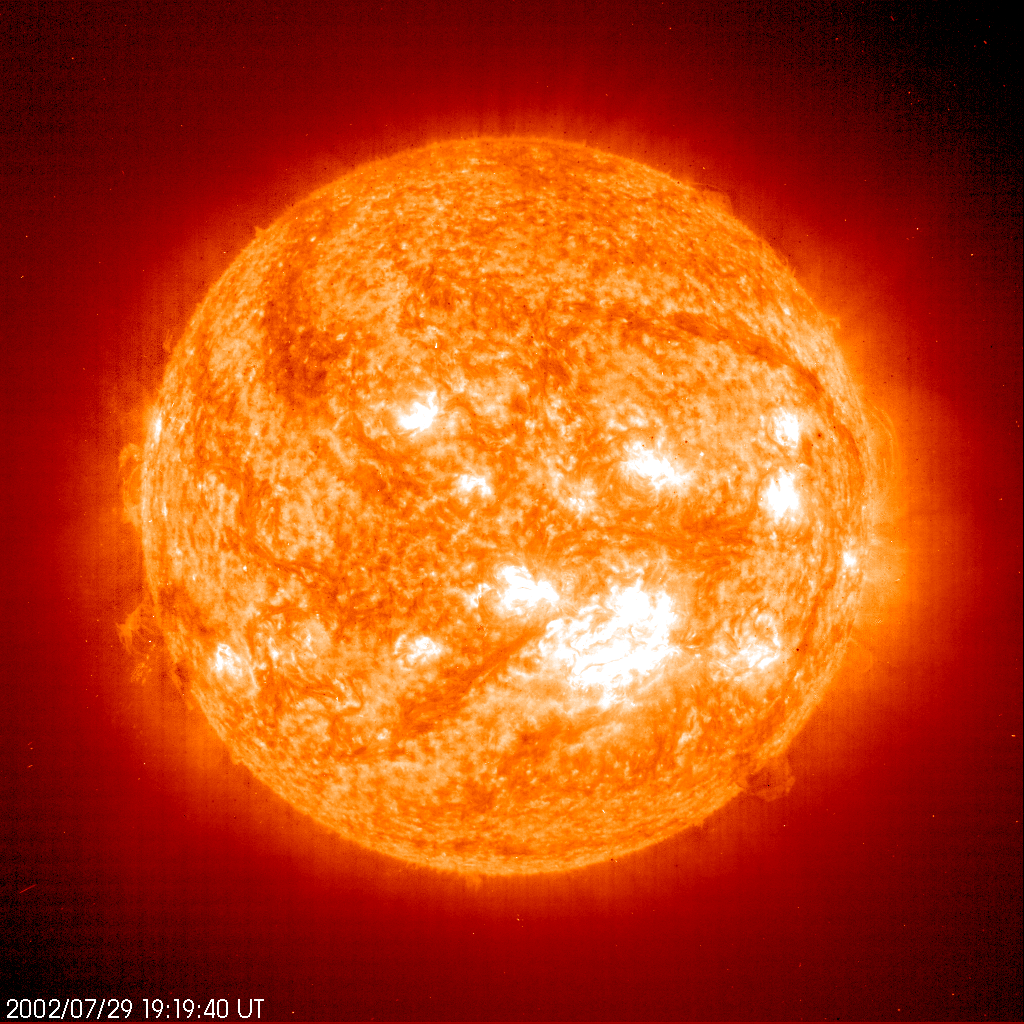
Through ultraviolet imaging, we are know allowed to view the photosphere in ways we never dreamed possible!
The EIT camera also allows us to look at other great features, such as coronal holes...
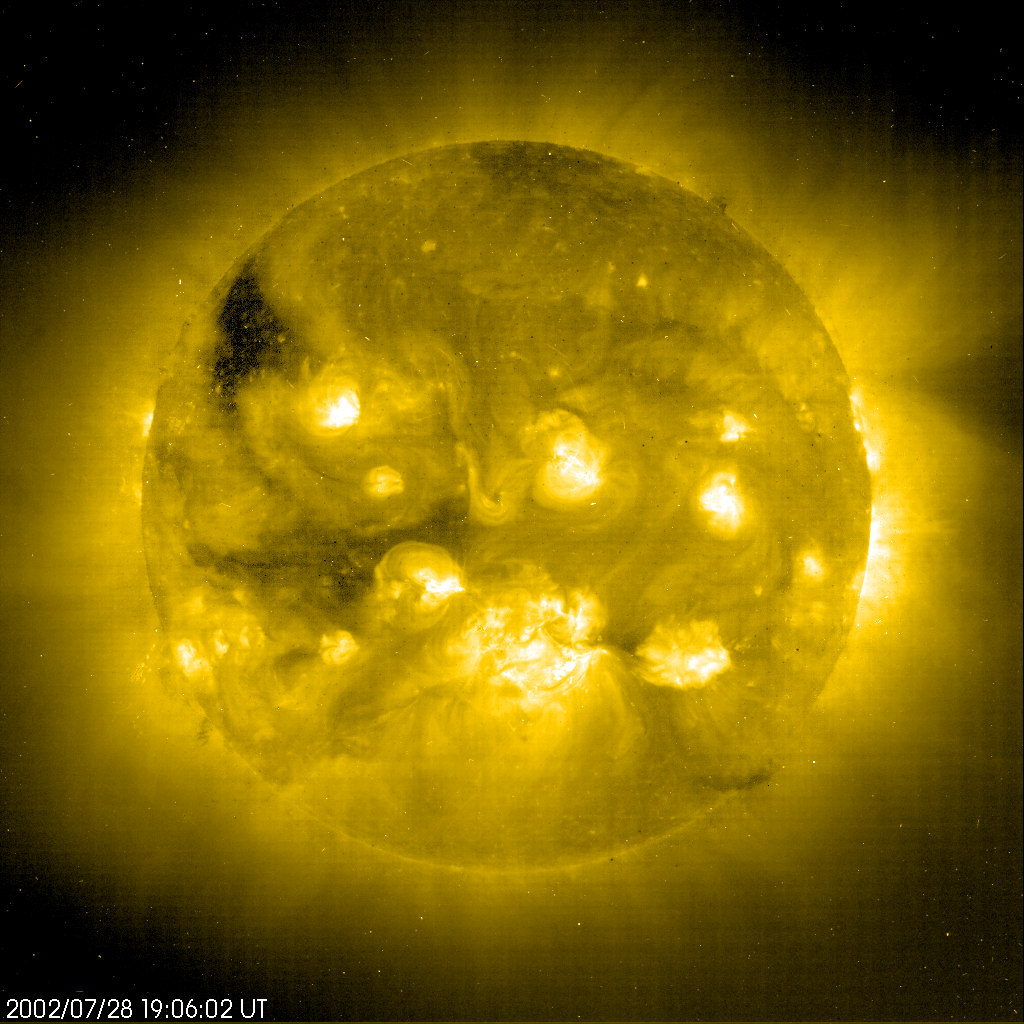
Awesome, huh? It's hard to believe the amount of energy the comes from the Sun until you see it for yourself!
Large Area and Spetrometric Coronograph (LASCO) -
Another great was to observe details of the Sun is through coronographs, and the SOHO/LASCO camera is just your ticket to the show! See?
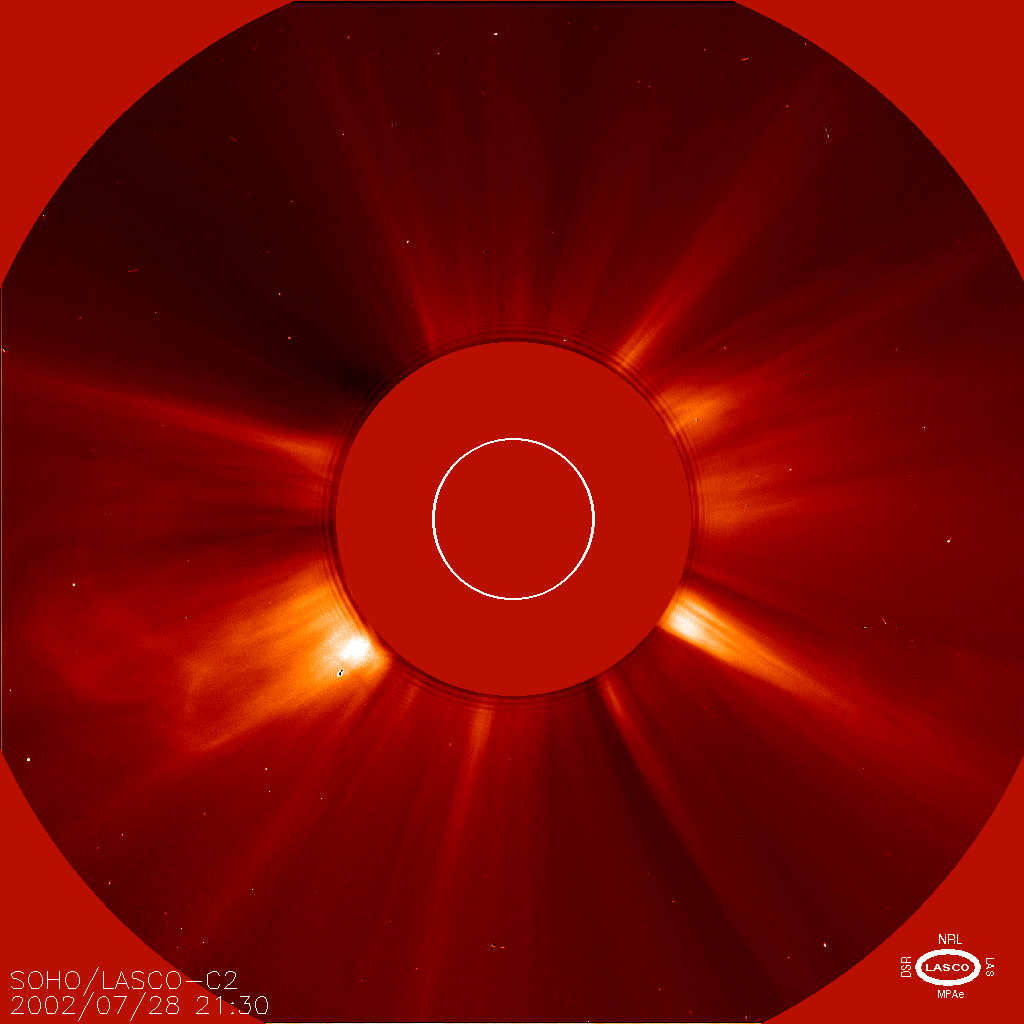
The C2 camera can give us with the touch of the button what we might have to travel across the world to view during a total eclipse! And what's more...
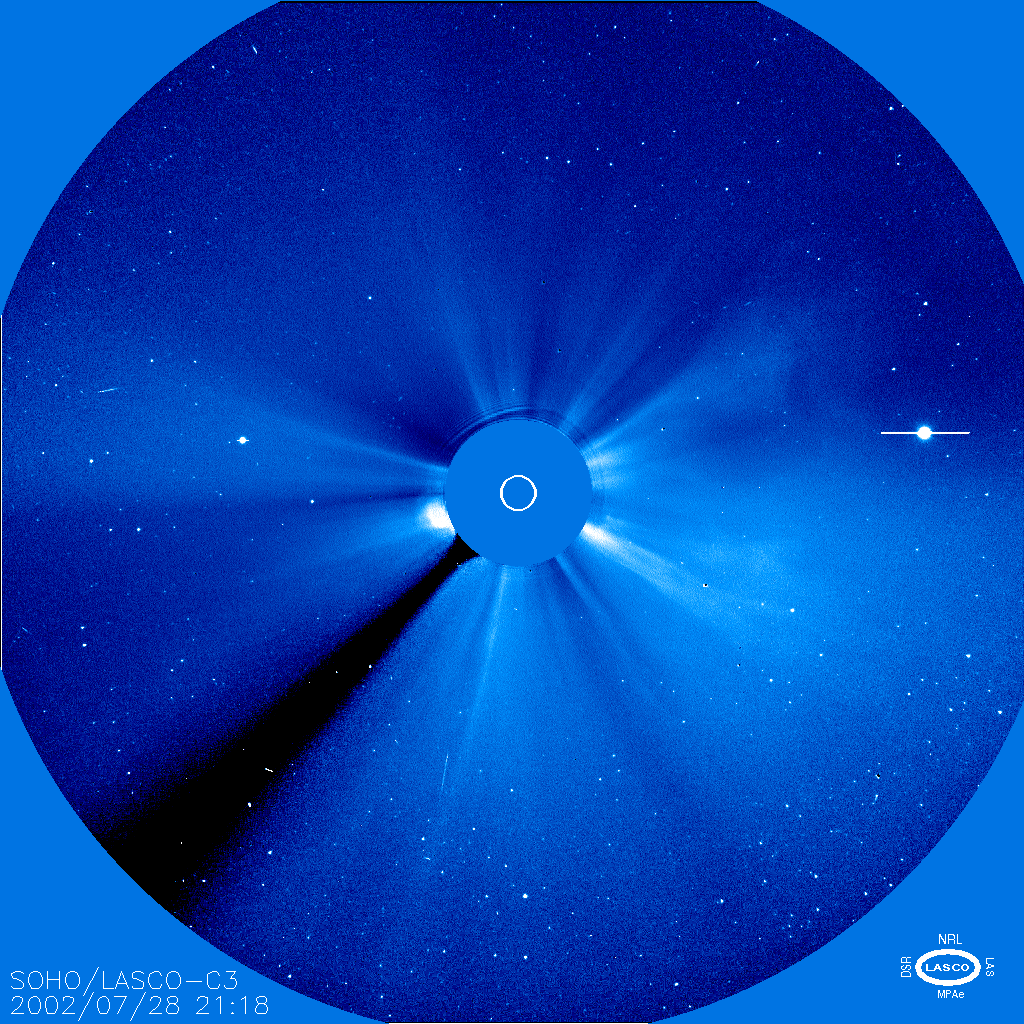
The C3 camera can even show us the stars and the planets!!!
And here you thought solar observance was just ho-hum... ;)
to top of page...Now, as we come to a close on this lesson, let's take a look at what happens to some regions!
~ SOLAR ACTIVITY ~
Cornonal Mass Ejection (CME) - This is a huge burst of plasma escaping the solar surface, and is highly charged across the energy spectrum. Thanks to SOHO/LASCO, we are able to witness this type of event firsthand!
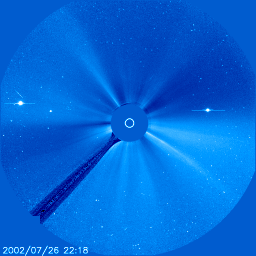
When energy of this type reaches the Earth (if it is directed toward us) can cause some awesome auroral displays!
Coronal Prominence:
These things are just too cool! Once again, our current solar conditions have produced an awesome display!
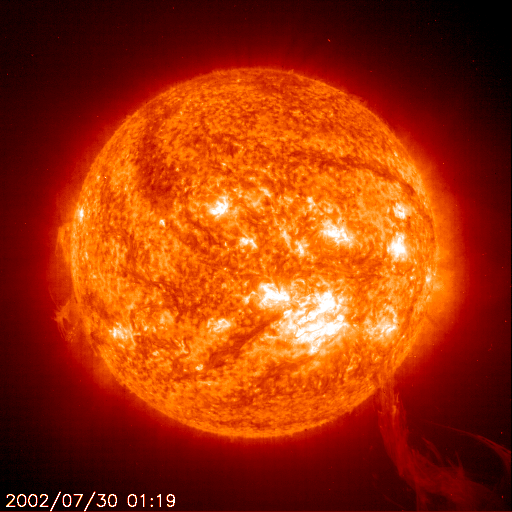
Can you imagine the power gushing out of this baby?!
Solar Flare -
And, although this one is directed toward the Earth, the brilliant spot in the center in none other than an X-class flare!
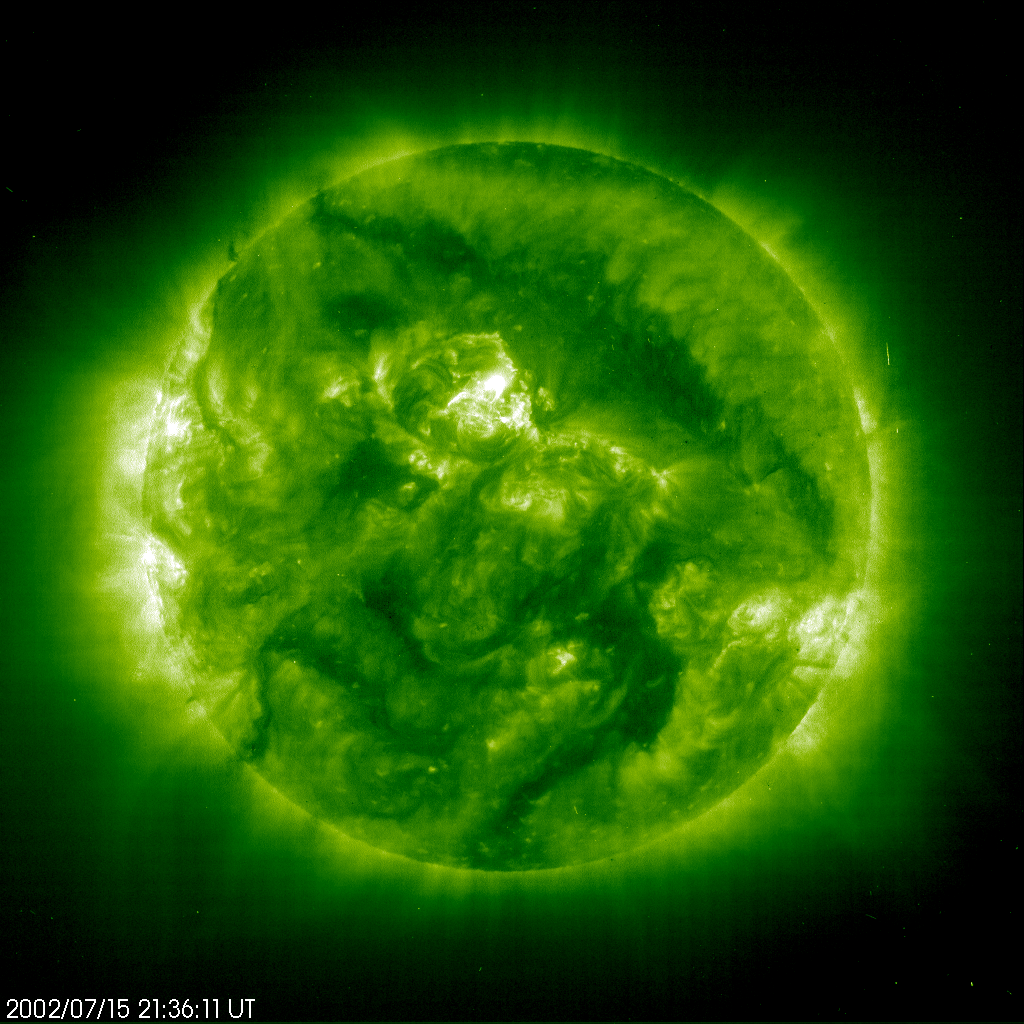
So, as you can see for yourself, our nearest Star is ever-changing...
And ever-fascinating!
You are quite welcome to view some of my "homespun" photography of sunspots at Sunspot Gallery or visit with current photos and observations at The Daily Observing Reports.
Until we meet again? I'll keep it warm for you... ;)
